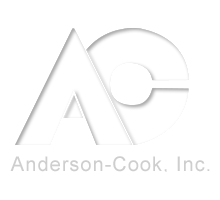FAQs
Q: Can the spline-rolling process roll more than splines?
A: Yes. A multitude of geometries can be rolled.
The terms “spline rolling” and “cold forming” are often used interchangeably but the process can generate unlimited geometries. Anderson-Cook spline-forming has been used to successfully produce helixes, threads, snap rings, worm gears, spurs, tapers, oil grooves, pinions, and burnishings. Cold forming can also be used on sheet-metal parts such as clutch housings. Additionally, multiple geometries can be rolled in one machine stroke.
Q: Are rolled splines stronger?
A: Yes. Rolled splines are 25 to 30 percent stronger.
Rolled splines are formed by the displacement of metal, not by a removal or addition of material. Opposing racks steadily increase pressure until the part material begins to flow. Material flow is precisely controlled by the tooth profiles ground into both racks. Displacement produces better grain structure as well as a work-hardened spline surface. As mentioned above, rolled splines are typically 25 to 30 percent stronger than cut splines.
Q: Can any geometry or any size part be rolled?
A: No. As with any process, there are limits — but give us a call.
Challenge us. Our experience is unmatched. If it can be rolled, we can roll it.
Please contact us with any questions regarding spline rolling.
